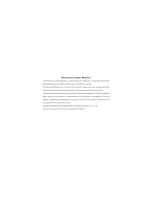
81
Sa
fet
y
Consumer Information on SAR
(Specific Absorption Rate)
This Model Phone Meets the
Government’s Requirements for Exposure
to Radio Waves.
Your wireless phone is a
radio transmitter and receiver. It is designed
and manufactured not to exceed the
emission limits for exposure to
radiofrequency (RF) energy set by the
Federal Communications Commission
(FCC) of the U.S. Government. These FCC
exposure limits are derived from the
recommendations of two expert
organizations, the National Counsel on
Radiation Protection and Measurement
(NCRP) and the Institute of Electrical and
Electronics Engineers (IEEE). In both cases,
the recommendations were developed by
scientific and engineering experts drawn
from industry, government, and academia
after extensive reviews of the scientific
literature related to the biological effects of
RF energy.
The exposure limit for wireless mobile
phones employs a unit of measurement
known as the Specific Absorption Rate, or
SAR. The SAR is a measure of the rate of
absorption of RF energy by the human
body expressed in units of watts per
kilogram (W/kg). The FCC requires wireless
phones to comply with a safety limit of 1.6
watts per kilogram (1.6 W/kg). The FCC
exposure limit incorporates a substantial
margin of safety to give additional
protection to the public and to account for
any variations in measurements.
Tests for SAR are conducted using
standard operating positions specified by
the FCC with the phone transmitting at its
highest certified power level in all tested
frequency bands. Although SAR is
determined at the highest certified power
level, the actual SAR level of the phone
while operating can be well below the
maximum value. Because the phone is
designed to operate at multiple power
levels to use only the power required to
reach the network, in general, the closer
you are to a wireless base station antenna,
the lower the power output.
Summary of Contents for Telus 200
Page 1: ......
Page 94: ...MEMO ...
Page 95: ...MEMO ...
Page 193: ...MEMO ...
Page 194: ...MEMO ...
















































